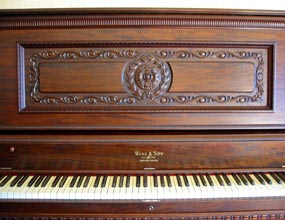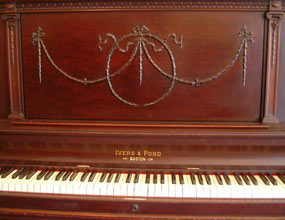|
|
Vintage Upright Pianos
|
| Upright pianos from the turn of the Century | |
|
|
|
|
|
Vintage Upright Pianos
|
| Upright pianos from the turn of the Century | |
|
|
|
| Rosewood Baldwin piano with applied molding.. | |
|
|
|
|
|
|
|
|
 |
 |
 |
|
|
|
|
| Packard piano | Kurtzmann walnut | mahogany carving |
|
|
|
|
| Conover mahogany upright piano. | Carving is identified by the textured background and fine detail. | carvings on a mahogany piano. |